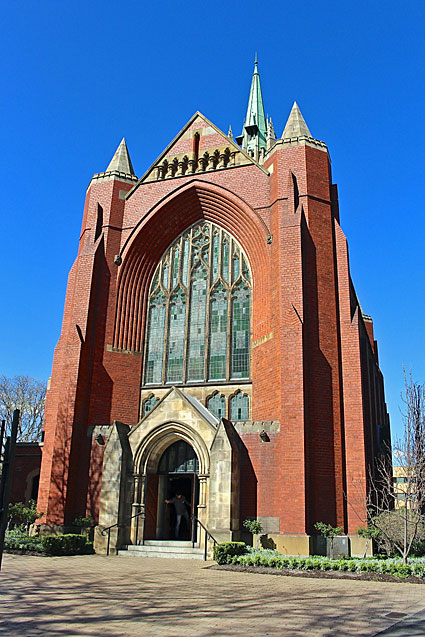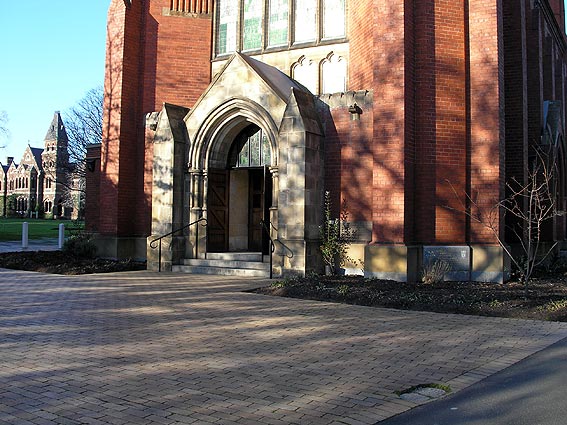Trinity College Chapel
Royal Parade, Parkville
First organ: Built 1923 J.E. Dodd, Adelaide;
rebuilt 1959 Hill, Norman & Beard (o/n V435);
rebuilt & enlarged 1989 S.J. Laurie.
2 manuals, 24 speaking stops, 9 couplers, electro-pneumatic.
Removed 1997; some parts used in new organ at Camberwell Grammar School, Canterbury
Second organ: B 1997-98 Kenneth Jones & Associates, Bray, Ireland.
3 manuals, 33 speaking stops, 6 couplers, mechanical & electric stop action.
Present organs:
1. B 2021-2022 Australian Pipe Organs
(incorporating some parts from previous Jones organ).
4m, 60spst, 38c, elpn.
2. B 1983 Knud Smenge.
1 manual, 4 speaking stops, no pedals, mechanical.
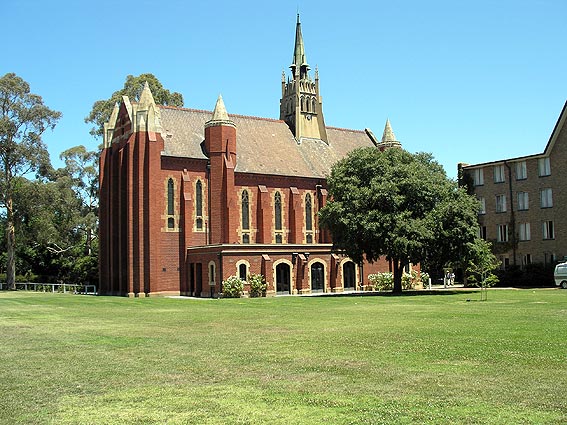
Handwritten memorandum on J.E. Dodd letterhead 23rd November 1921. "Dr Floyd's copy to be returned with all notes JED 28-11-2" incorporating details of console arrangements: drawstop and piston layouts, combinations. "All alterations noted & originals returned 5/12/1921." The specification of the organ is unusual in that three stops on the bottom manual are grouped on the console as 'Choir' on the right hand stop jamb and that these are clearly enclosed in a separate swell box.
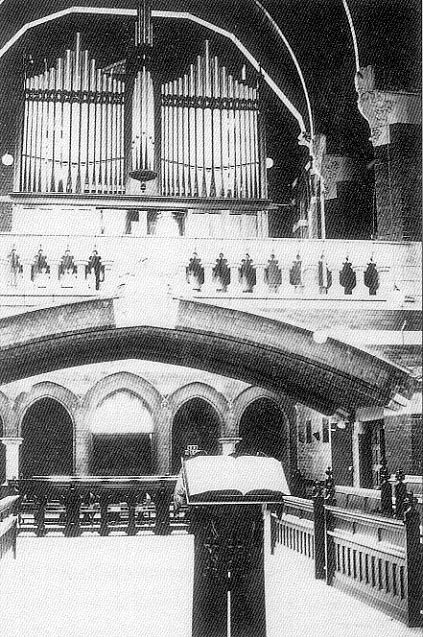
The Dodd organ of 1923
| GREAT Bourdon Open Diapason Claribel Principal CHOIR Dulciana Flute d'Orchestre Clarinet Swell to Great SWELL Open Diapason Hohl Flote Gamba Celeste Gemshorn Flauto Traverso Fifteenth Mixture Bassoon Cornopean Oboe Clarion Tremulant Sub Octave Unison Off Super Octave PEDAL Open Diapason Bourdon Octave Bass Flute Contra Fagotto Great to Pedal Swell to Pedal |
16 8 8 4 8 4 8 8 8 8 8 4 4 2 [III] 16 8 8 4 16 16 8 8 16 |
[A] (enclosed: playable on lower manual) [B] [C] [B] [C] [D] [A] [D] [A] [B] |
[the above specification reprinted from OHTA NEWS July 2005 p15: Dr AE Floyd and his role as Organ Consultant. Ian Burk & John Maidment]
The Dodd organ was rebuilt by Hill, Norman & Beard in 1959 with major tonal revisions, new console, action and divided on either side of the bridge. Further work was undertaken by S.J. Laurie in 1989 (additions marked •). It was removed from the building in 1997 and some parts (such as the two slider windchests and a limited mount of pipework) were used in a new organ built for Camberwell Grammar School, Canterbury by Australian Pipe Organs Pty Ltd, with the exception of stops marked ¶ which have been retained in the current instrument.
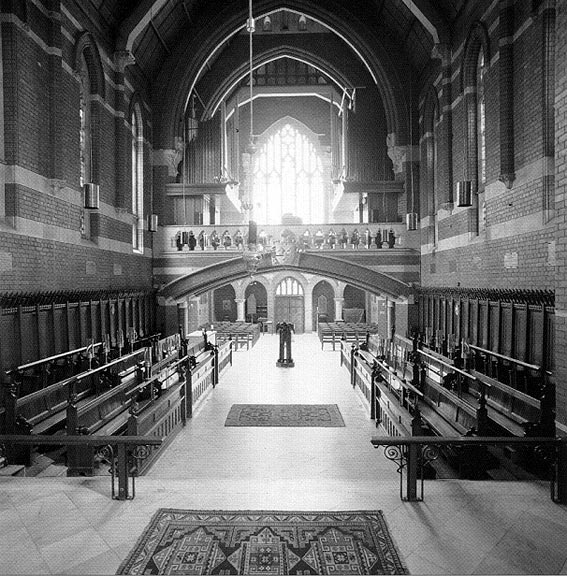
The organ as it appeared following the 1959 rebuild by Hill, Norman & Beard
| GREAT Open diapason Gedeckt Gamba Octave Super octave Mixture Sharp mixture Trompette Swell sub-octave to Great Swell to Great Swell octave to Great SWELL (enclosed) Hohl flote Salicional Voix celeste Gemshorn Nazard Flageolet Cymbel Contra oboe Cornopean Sub-octave Swell unison off Octave PEDAL Majorbass Bourdon Grossquint Octave Flute Octave flute Contra oboe Great to Pedal Swell to Pedal Swell octave to Pedal |
8 8 8 4 2 III III 8 8 8 8 4 2-2/3 2 III 16 8 16 16 10-2/3 8 8 4 16 |
• ¶ (17.19.22) • (26.29.33) • (22.26.29) [A] ¶ ¶ [B]¶ [C] [C] [B] [C] [C] [A] |
The present organ, built in 1997 by Kenneth Jones of Dublin, Ireland, was installed in the Chapel in early 1998, and dedicated on Palm Sunday, 5 April. The raising of funds for the purchasing of the instrument was undertaken by the Trinity College Music Foundation, a worthwhile and profitable project to provide the musical and theological communities of the College and the wider concert-attending public with a fine instrument, worthy of the building and its musical heritage. The organ is unique both in design and specification, much emphasis having been placed on its ‘architectural and visually aesthetic qualities’, and the requirement that it aptly complement ‘the art-nouveau Gothic and naturalistic motifs of the building’. It was built in Tasmanian oak to ‘accord with the permanent seats and paneling’ of the Chapel. The organ’s specification and tonal qualities, on the advice of the College’s Organ Consultant Mr John Maidment OAM, ‘should encompass richness, warmth, mystery, character, gravity and brilliance as required, offering wide flexibility’.
The Chapel also boasts a portable chamber organ.
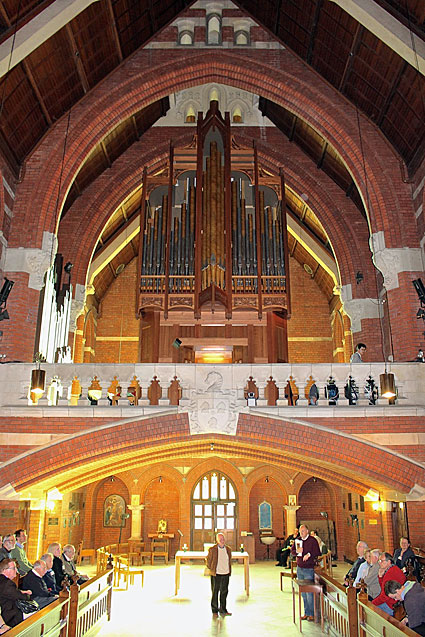
Specification of the Jones Grand Organ (OHTA News April 1998):
| Great Organ (I) Double Diapason Open Diapason Rohrflute Octave Coppel Flute Fifteenth Mixture Trumpet Tremulant Swell to Great Solo to Great Swell Organ (II) Stopped Diapason Salicional Voix Céleste Principal Wald Flute Octavin Mixture Double Trumpet Cornopean Oboe Tremulant Solo Organ (III) Open Flute Gamba Wide Octave Nazard Superoctave Nachthorn Tierce Cromorne Solo Trumpet Pedal Organ Subbass Open Wood Subbass Octave Bass Flute Trombone Great to Pedal Swell to Pedal Solo to Pedal Solo octave to Pedal |
16 8 8 4 4 2 IV 8 8 8 8 4 4 2 IV-V 16 8 8 8 8 4 2-2/3 2 2 1-3/5 8 8 32 16 16 8 8 16 |
* * * A * A A |
open to FFF#, 1 - 6 stopped metal 1-1/3 Great + Solo (enclosed) oak bass TC 2 (unenclosed) 1 - 18 from Superoctave polyphone bass: mahogany pine & oregon 1 - 12 from Great Open Diapason pine pine |
Accessories
6 thumb pistons to Great organ
6 thumb pistons to Swell organ
6 thumb pistons to Solo organ
6 toes pistons to Pedal organ
8 general thumb pistons, duplicated by toe pistons
Stepping facility to interrogate general pistons in sequence
All pistons adjustable by setter piston and with multiple memories
Reversible thumb pistons for:
Swell to Great
Solo to Great
Great to Pedal
Swell to Pedal
Solo to Pedal
Reversible toe pistons for:
Swell to Great
Great to Pedal
General Cancel thumb piston
Balanced mechanical expression pedal with switchable electro-mechanical action to rear shutters
Adjustable bench
Provision for closed circuit television
Tuning: Equal Temperament A = 440 @ 21˚ C.
Wind pressures:
Great and Solo - 80mm
Swell - 90mm
Pedal - 90mm
Polyphone - 160mm
Compass: 58/30
* ranks retained from previous organ, all restored and revoiced
The ranks that were retained have the following attributions:
Swell Cornopean, Oboe and Pedal Open Wood from the Dodd organ
Solo Gamba from the Laurie enlargement of the old organ 1989 - a Keraulophon from the 1860s with a new bass octave
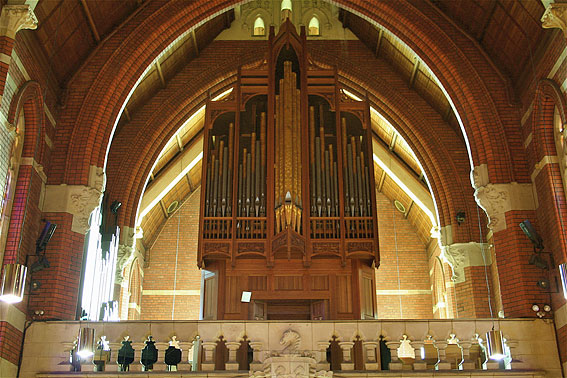
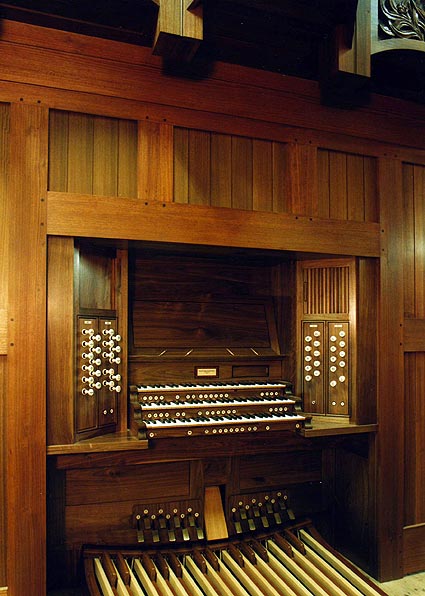
Photo above: Kenneth Jones - taken at the organbuilder’s factory in 1997
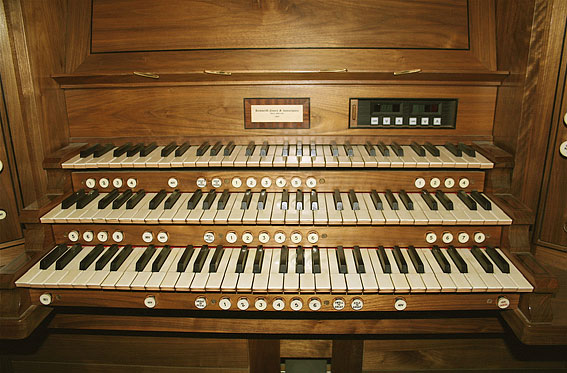
|
||
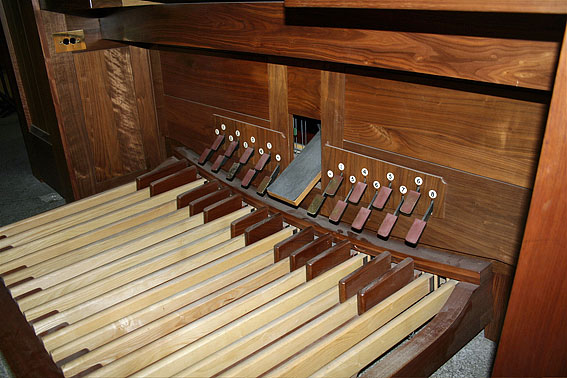
|
||
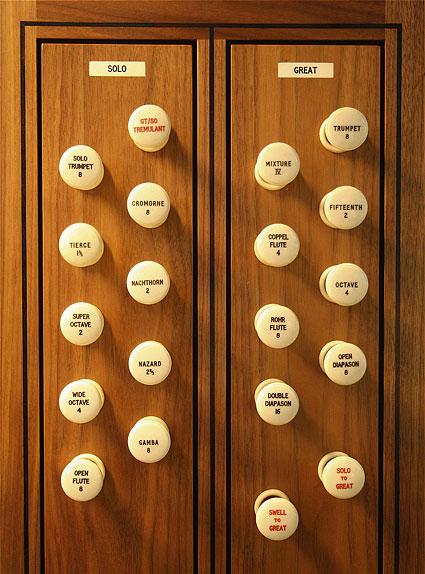 |
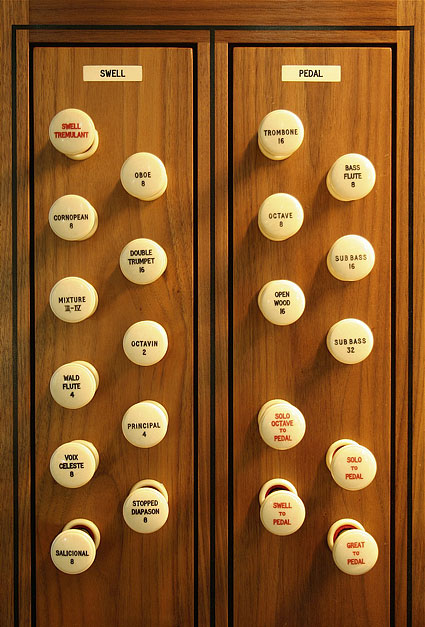 |
|
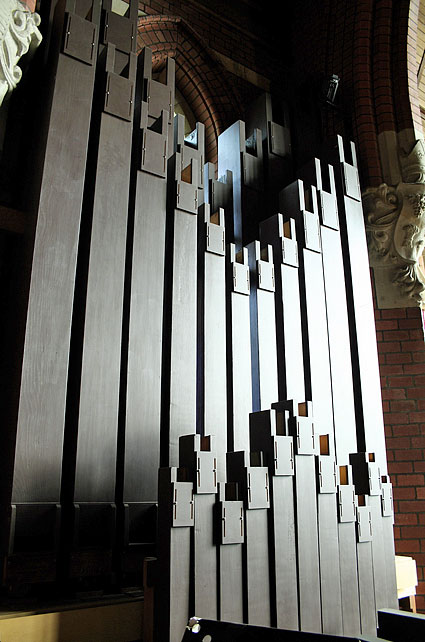 |
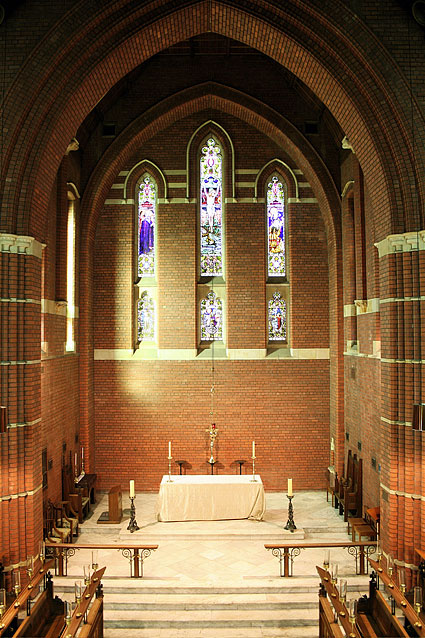 |
|
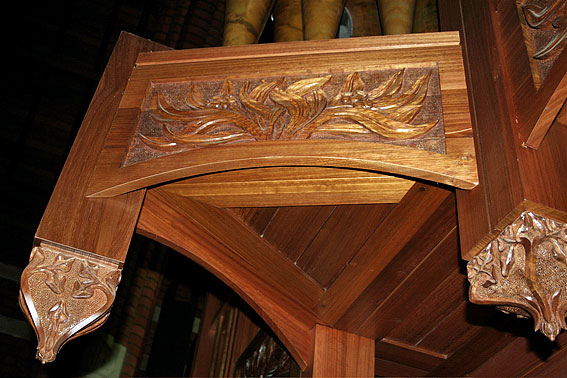
|
||
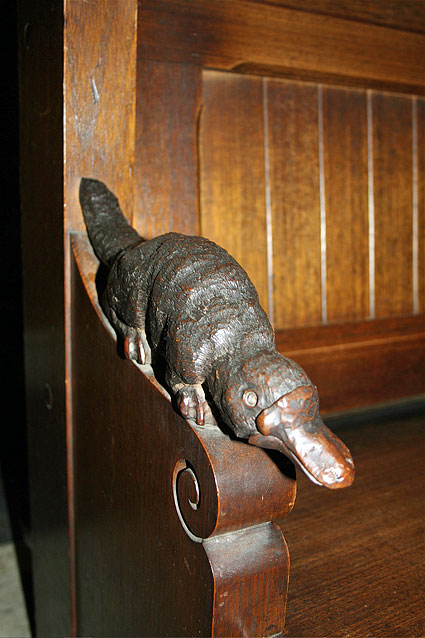 |
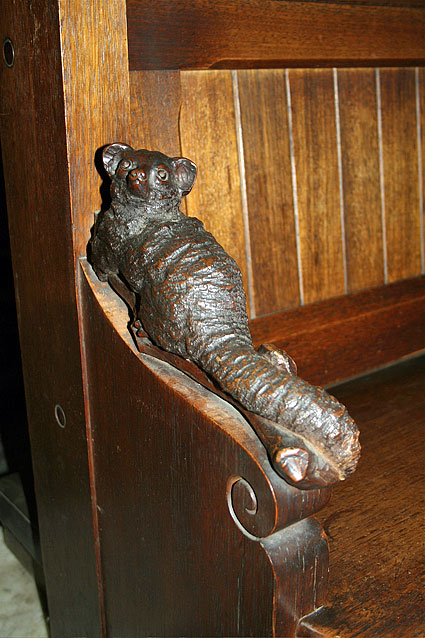 |
|
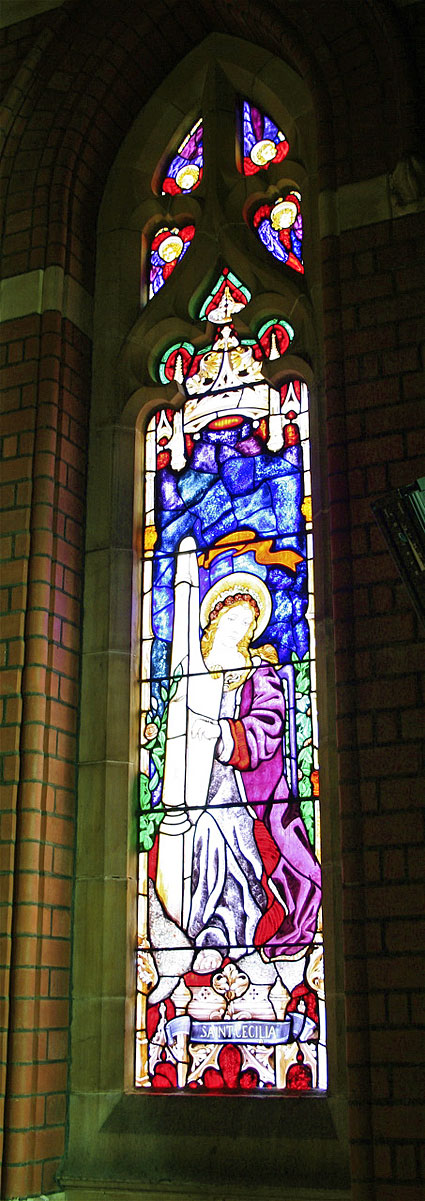
|
||
Internal photos: Trevor Bunning (April 2009)
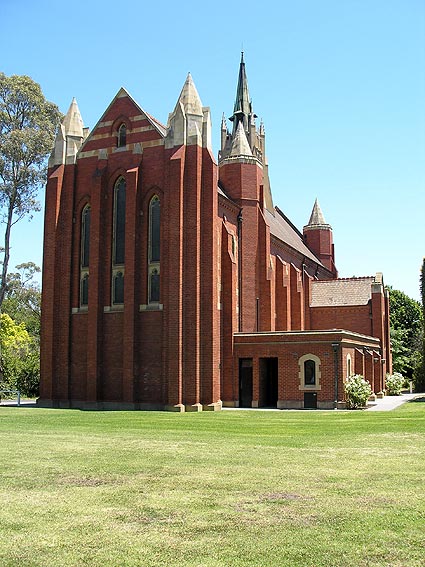 |
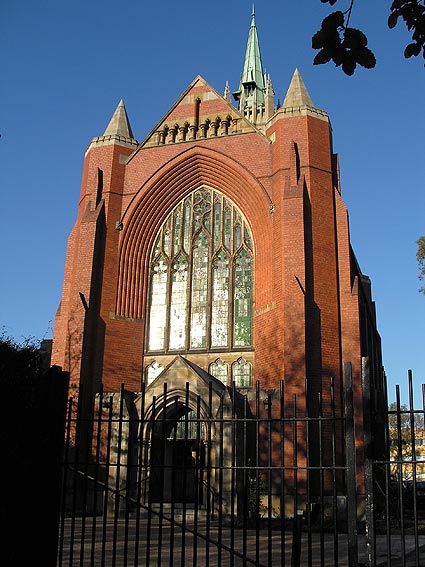 |
|
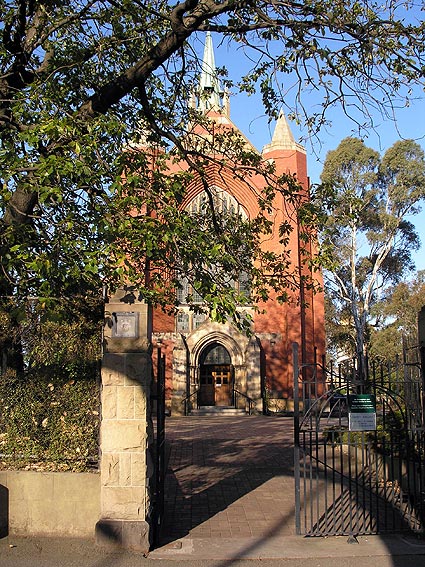 |
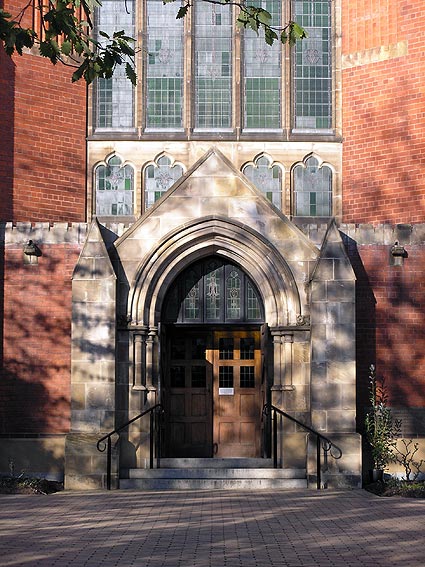 |
|
|
|
||
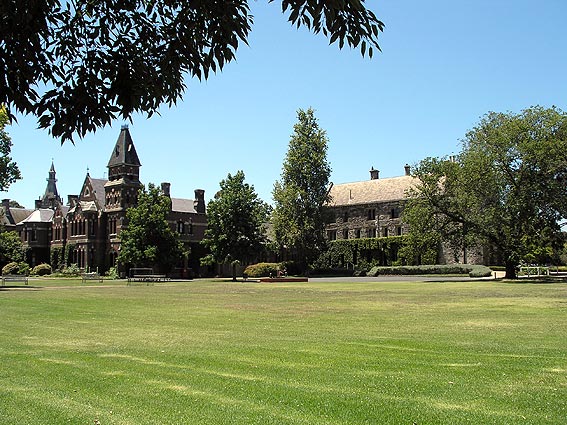 |
||
Photos: Simon Colvin (Dec. 2006 and Aug. 2007)
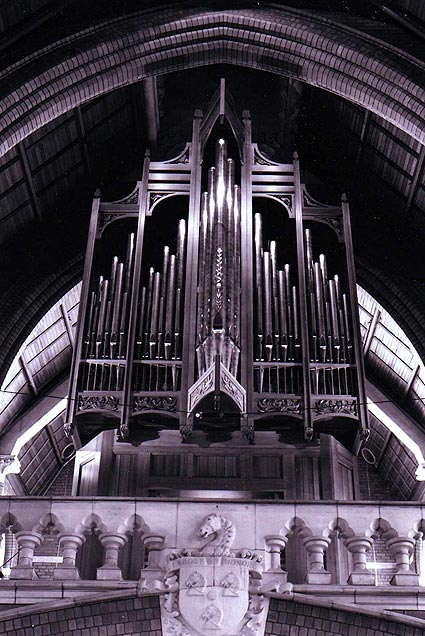
Organ photos: Andrew Lecky
